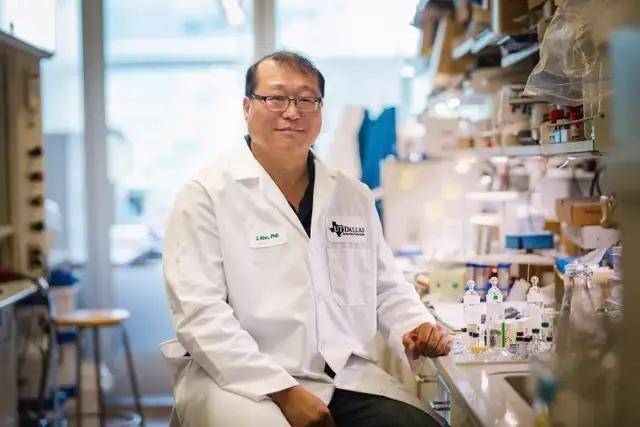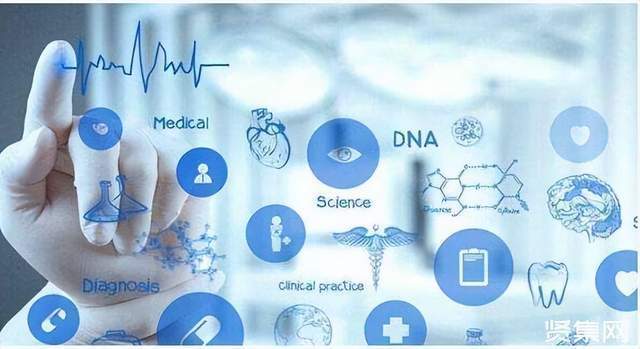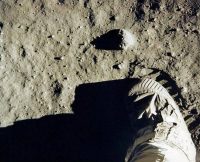A new molecule created by a researcher at the University of Texas at Dallas has killed a variety of difficult-to-treat cancers, including triple-negative breast cancer, by exploiting a cellular weakness previously untargeted by existing drugs.
The study, conducted using isolated cells, human cancer tissue, and human cancer cultured in mice, was recently published in the journal Nature Cancer.
As co-corresponding author of the study and associate professor of chemistry and biochemistry in the UT Dallas School of Natural Sciences and Mathematics, Dr. Jung-Mo Ahn has spent his career developing small targeted protein-protein interactions in cells molecule. He previously used an approach called structure-based rational drug design to create potential therapeutic candidates for refractory prostate and breast cancer.
Dr. Jung-Mo Ahn, associate professor of chemistry and biochemistry at the University of Texas at Dallas, synthesized a new compound called ERX-41.

In the current work, Ahn and his colleagues tested a novel compound he synthesized called ERX-41 for its effect on estrogen receptor (ER)-containing and estrogen receptor-free (ER)-free The role of breast cancer cells. While there are effective treatments for patients with ER-positive breast cancer, there are few treatment options for patients with triple-negative breast cancer (TNBC) that lack estrogen, progesterone, and human epidermal growth factor 2 receptors. TNBC usually affects women under the age of 40 and has worse outcomes than other types of breast cancer.
“The ERX-41 compound doesn’t kill healthy cells, but it kills tumor cells, whether or not the cancer cells have estrogen receptors,” Ahn said. “In fact, it killed triple-negative breast cancer cells better than ER-positive cells.
“That confused us at the time. We knew it had to target something other than the estrogen receptor in TNBC cells, but we didn’t know what that was.”
To study the ERX-41 molecule, Ahn collaborated with collaborators, including co-corresponding authors Ganesh Raj, Ph.D., professor of urology and pharmacology, Harold C. Simmons Comprehensive Cancer Center, UT Southwestern Medical Center, and Ratna Vadlamudi, Ph. Professor of Obstetrics. Dr. Tae-Kyung Lee, a former UTD research scientist in Ahn’s Bioorganic/Medicinal Chemistry Laboratory, was involved in the synthesis of the compound.

The researchers found that ERX-41 binds to a cellular protein called lysosomal acid lipase A (LIPA). LIPA is found in a cellular structure called the endoplasmic reticulum, an organelle that processes and folds proteins.
“For a tumor cell to grow rapidly, it has to produce a lot of protein, which puts pressure on the endoplasmic reticulum,” Ahn said. “Cancer cells significantly overproduce LIPA, much more than healthy cells. By binding to LIPA, ERX-41 blocks protein processing in the endoplasmic reticulum, which becomes bloated, leading to cell death.”
The team also tested the compound in healthy mice and observed no side effects.
“It took us a few years to pinpoint exactly which proteins were affected by ERX-41. That was the hard part. We chased a lot of dead ends, but we didn’t give up,” Ann said.
“Triple-negative breast cancer is particularly insidious — it targets young women; it’s aggressive, and it’s treatment-resistant. I’m really glad we’ve discovered something that has the potential to make a big difference for these patients.”
The researchers fed the compound to mice with human cancer tumors, and the tumors shrank. The molecule has also been shown to be effective at killing cancer cells in human tissue collected from patients who had had their tumors removed.
They also found that ERX-41 was effective against other cancer types with elevated endoplasmic reticulum stress, including the hard-to-treat pancreatic and ovarian cancers and glioblastoma, the most aggressive and lethal primary brain tumor cancer.
“As a chemist, I’m somewhat isolated from patients, so this success was an opportunity for me to feel that what I’m doing is useful to society,” Ahn said.



GIPHY App Key not set. Please check settings